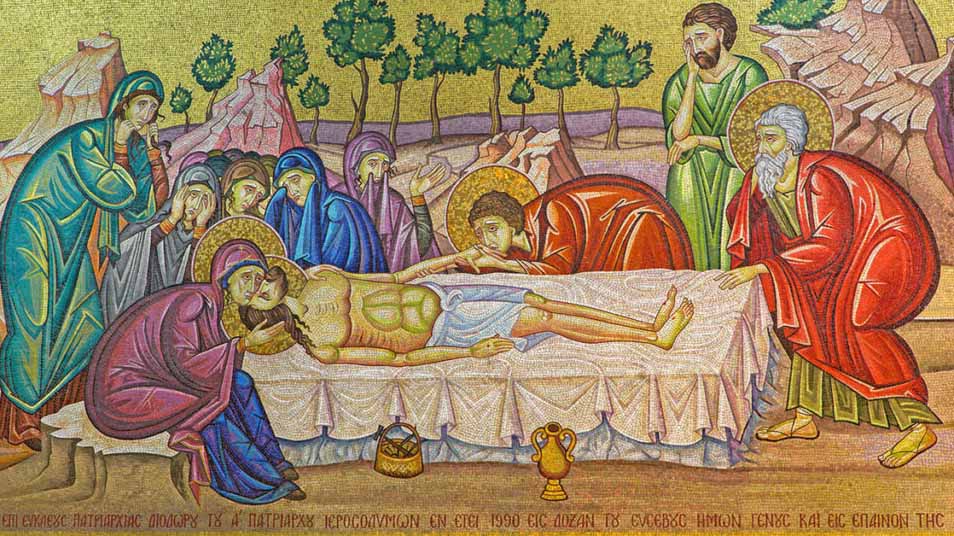We ended the last presentation by looking at how you go about creating an ensouled talisman. In the first type, a mineral is encapsulated in the talisman, which continues to emit a ceaseless stream of energy. The second variety is one in which the ingredients are so arranged as to make it a means of manifestation of one of a certain class of undeveloped nature spirits. These “spirits” provide the force necessary for the dissemination of the influence, which the designer of the talisman wishes to have emitted. Such talismans may last for thousands of years, to the intense delight of the nature-spirit and the great benefit of all who approach the magnetised centre.
Another type of talisman is a Linked talisman. It has been magnetised so that it brings it in close rapport with its maker. In this way, it becomes a kind of outpost of their consciousness. The wearer of the talisman could thus, through their link, send a cry for help to its builder, or the builder could direct a stream of influence through it to the wearer. Such a talisman would facilitate what Christian Scientists call “absent treatment”.
In rare cases, a physical talisman may be connected with the causal body of an Adept, as was done with those talismans buried in various countries by Apollonius of Tyana, about 1,900 years ago. He did this so that the force, which they radiated, might prepare those places to be the centres of great events in the future. Some of those centres have already been utilised, others are to be employed in the near future in connection with the work of the coming World Teacher, Christ-Maitreya. Remember who Apollonius was? He was Jeshu, reincarnated a century later in the Levant. At the end of this incarnation, he took the (i5) and quite literally disappeared in a puff of smoke.
Great shrines are usually erected on the spot where some holy person lived, where some great event, such as an Initiation, took place, or where there is a relic of a great person. In any of these cases, a powerful magnetic centre of influence has been created, which will persist for thousands of years. Even if the “relic” does not happen to be a very powerful one, or is not even genuine, which is the case of the majority of Catholic relics, the centuries of devotional feeling poured out upon the relic by the hosts of visitors, would make the place an active centre for beneficent radiation. The influence of all such places on visitors and pilgrims is unquestionably good. Part of this positive effect is due to the magnetism imparted either within or delivered to it by worshipers, but a big part is also due to the creation of an egregore, which is energised by and feeds back to pilgrims. This is an Emotional World phenomenon.
It has already been mentioned that precious stones are naturally suited to be made into talismans or amulets. The rudraksha berry, used frequently for necklaces in India, is eminently adapted for magnetisation, where spiritual thought or meditation is required and disturbing influences are to be kept away. The beads made from the tulsi plant are another example, though the influence they give is somewhat different. This plant is known for its broad-spectrum antimicrobial qualities. An interesting set of talismans are those objects, which produce strong scents. The gums of which incense is made, for example, can be chosen to be favourable to spiritual and devout thought. It is also possible to combine ingredients to produce the opposite effect, as was sometimes done by mediaeval witches.
A trained occultist makes a regular practice of charging many things, which pass from them to others with beneficial influences: for example, letters, books, or presents. By a single effort of will, the occultist may charge even a typed letter far more effectively than it would be unconsciously charged when written by hand by someone not familiar with these techniques. Similarly, a trained occultist, by a mere wave of the hand, coupled with a strong thought, may almost instantaneously demagnetise food, clothing, bedding, rooms, etc. Such demagnetisation, while removing magnetism, which has been externally impressed, would not affect the innate magnetism of objects, for example, as the inherently unpleasant vibrations of dead flesh, which even cooking could not destroy. The process of demagnetising rooms may be facilitated by the burning of incense, or by sprinkling water, the incense and water being first passed through the process recommended for making talismans. I achieve this by strategically placing crystals in a room.
It should also be kept in mind that as physical matter in a human is in exceedingly close touch with the emotional and mental envelopes, coarseness and grossness in the physical vehicle, imply a corresponding condition in the other vehicles: hence the great importance to the occultist of physical as well as magnetic or etheric cleanliness.
The “holy water” used in certain Christian churches is a clear example of magnetisation, water being very readily charged with magnetism. The instructions given in the Roman rite make it quite evident that the priest is required, first, to “exorcise” the salt and water, i.e., to cleanse them from all objectionable influences They then, making the sign of the cross, direct a blessing to the elements, i.e., to pour their own magnetism into them, their will being directed to the purpose of driving away all evil thoughts and feelings. It is worth noting that salt contains chlorine, a “fiery” element, and hence the combination of water, the great solvent, with fire the great consumer, is highly effective as a cleansing agency, hence the advice to soak crystals in salt water to remove etheric contamination.
Similar ideas underlie many other ceremonies in the Christian Church: such as baptism, in which the water is blessed and the sign of the cross made over it; the consecration of churches and burial grounds; the blessing of the vessels of the altar and the vestments of the priests. The practice of using bells and incense at the confirmations and ordination of priests and the consecration of bishops are all examples of the unconscious use of etheric energy to bring about a cleansing effect. In the Eucharist, the wine has a very powerful influence on the higher emotional levels; I am sure it does, especially if you drink the whole bottle. Water, as we all know, can be charged so that it sends out etheric vibrations.
At baptism, in what Arthur Powell calls the Liberal Catholic Church, the priest makes the sign of the cross over the forehead, throat, heart and solar plexus of a child. This has the effect of opening up these etheric chakras so that they grow to, perhaps, the size of a coin and begin to sparkle and whirl as they do in adults. In addition, the magnetised water, as it touches the forehead, sets in vibration the etheric matter, stimulates the brain and through the pituitary body affects the Emotional body, and through that the mental body. Later the priest, by anointing the top of the head with chrism, a holy oil, makes the crown chakra there serve as a kind of sieve, which rejects the coarser feelings, influences or particles and also, by an effort of will, he closes the four centres, which have been opened. At confirmation, the effect, which has been produced on the atmic principle (45), is reflected in the Etheric Double.
At the ordination of a priest, it is intended to clear the way between the higher principles and the physical brain. The blessing floods the etheric brain and is meant to run up through the pituitary body, which is the point of closest junction between the dense physical, the etheric and the Emotional envelopes. The anointing of the head of the bishop with chrism is intended to act on the crown chakra that, instead of the usual saucer-like depression, becomes more like a projecting cone, such as is often seen in statues of the Lord Buddha. The ordination of the cleric is intended principally to act on the etheric body, which is the doorkeeper to the emotional envelope and the reader of events communicated to the mental body.
There seems to have been an old custom – out of which has arisen the present Roman Catholic method of anointing the organs of the senses – of sealing all the chakras in the body of a dying person, lest objectionable entities should seize upon that body as the owner left it and employ it for purposes of evil magic. Many nervous afflictions could probably be helped by anointing with consecrated oil and etheric disease might well be cured by employing such actions. I wonder how many priests know what they are doing when they go through these rituals. Clearly, the people who set them up knew what they were about, but as is so often the case with many rituals, their true purpose has been lost through the mists of time.
In a Bishop’s crozier, in the knob of which the consecrated jewels are placed, the etheric energy, which radiates from the jewels has the potential to be very potent. If used knowingly, it has the potential to bring about cures for the afflicted. Gandalf knew what he was doing when he waved his staff about. Mediaeval alchemists also employed similar methods in their use of magnetised swords, drugs, etc. In the Ancient Mysteries, the thyrsus was a powerfully magnetised instrument, which was laid against the spinal cord of the candidate, giving them in the process, some of the magnetism with which it was charged.
In the next presentation, we will examine the phenomenon of ectoplasm.


